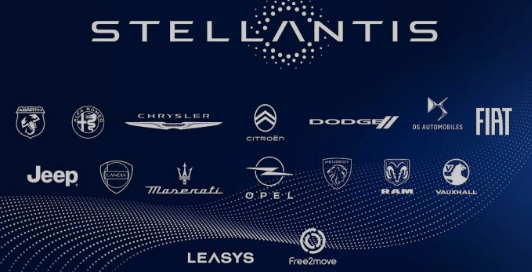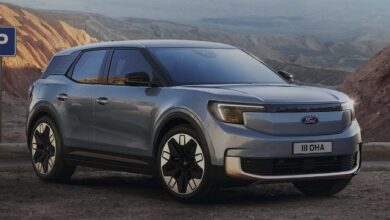stellantis stock analysis

Stellantis N.V. (STLA), formed through the merger of Fiat Chrysler Automobiles and the PSA Group, is a global automotive giant with a diverse portfolio of iconic brands. As the automotive industry undergoes a significant shift toward electrification, Stellantis is accelerating its efforts to adapt and compete in the electric vehicle (EV) market. This Stellantis stock analysis examines the company’s Return on Equity (ROE) over recent years, its EV strategy, strengths, weaknesses, and the competitive landscape it faces, helping you determine if STLA is a worthwhile investment.
What is ROE, and Why Does it Matter for STLA Stock?
Return on Equity (ROE) is a crucial financial metric that measures a company’s profitability relative to its shareholders’ equity. A higher ROE generally signifies better financial performance and stronger returns for investors holding STLA stock. Monitoring ROE is essential for assessing Stellantis’ efficiency in generating profits from its equity.
Stellantis’ ROE: A Merger and a Transformation
Analyzing Stellantis’ ROE over recent years requires considering the impact of the merger and the company’s ongoing efforts to integrate its operations and invest in new technologies.
Merger Impact
The merger of FCA and PSA in 2021 created Stellantis, and its initial ROE reflects the combined financial performance of the two entities.
Restructuring and Synergies
Stellantis is focused on realizing synergies from the merger, optimizing its operations, and streamlining its manufacturing footprint to enhance profitability.
EV Investments
The company is investing heavily in electric vehicle development across its various brands. While this focus on electrification may impact short-term profitability, it is crucial for long-term growth and competitiveness.
Understanding Stellantis: A House of Brands
To fully assess Stellantis’ potential and the outlook for STLA stock, it’s important to consider its strategic direction, strengths, weaknesses, and the competitive dynamics of the automotive market.
Stellantis’ Vision: “Dare Forward 2030”
Stellantis’ “Dare Forward 2030” strategic plan outlines its vision for the future, focusing on:
- Electrification: Achieving 100% of passenger car sales in Europe and 50% in the United States as battery electric vehicles (BEVs) by 2030.
- Software and Technology: Developing advanced software-defined vehicles and investing in autonomous driving technology.
- Carbon Net Zero: Aiming for carbon net zero emissions by 2038.
Strengths of Stellantis
- Diverse Brand Portfolio: Stellantis boasts a wide array of iconic automotive brands, including Jeep, Ram, Dodge, Chrysler, Fiat, Alfa Romeo, Maserati, Peugeot, Citroën, Opel, and Vauxhall. This diversity provides a robust foundation for capturing various market segments.
- Global Reach: Stellantis has a significant global presence, with manufacturing and sales operations in North America, Europe, South America, and Asia, allowing it to cater to diverse markets and customer needs.
- Strong Truck and SUV Business: Stellantis has a solid position in the profitable truck and SUV segments, particularly in North America with its Ram and Jeep brands.
- EV Acceleration: The company is ramping up its EV development across its brands, with plans to launch a wide range of electric vehicles in the coming years.
Weaknesses of Stellantis
- Integration Challenges: Successfully merging the operations of two large automotive groups (FCA and PSA) presents significant challenges.
- Legacy Costs: Managing the transition to EVs while maintaining its legacy internal combustion engine business creates cost pressures.
- Dependence on Specific Markets: Stellantis is reliant on certain key markets, particularly North America and Europe, making it vulnerable to regional economic conditions.
Stellantis’ Competitors: A Global Automotive Battleground
Stellantis faces intense competition from major automakers and EV startups, including:
- Toyota: The world’s largest automaker by sales volume, known for its reliability and fuel efficiency.
- Volkswagen Group: A global automotive giant with a strong presence in Europe and China.
- General Motors: A major player in North America and China, aggressively pursuing its EV strategy.
- Ford: Another American automotive powerhouse with a growing EV portfolio.
- Tesla: The leader in electric vehicles, known for its strong brand and innovative technology.
Stellantis’ Key Projects
- STLA Platforms: Developing four new electric vehicle platforms (STLA Small, Medium, Large, and Frame) to underpin its future EV lineup.
- New EV Models: Launching a wide range of electric vehicles across its brands, including electric versions of popular models like the Jeep Wrangler and Ram 1500.
- Software Development: Investing in software capabilities to enhance vehicles with advanced features and connectivity.
- Autonomous Driving: Partnering with companies like Waymo and Mobileye to develop autonomous driving technology.
Stellantis’ Future: Navigating the EV Transformation
Stellantis’ future hinges on its ability to successfully execute its EV strategy, navigate the complexities of the global automotive market, and adapt to the rapid pace of technological change. Key factors that will influence its success include:
- EV Adoption: The rate at which consumers embrace electric vehicles will be crucial for Stellantis’ growth in this segment.
- Technological Innovation: Stellantis must continue investing in and developing advanced technologies, including autonomous driving, connected car features, and new battery technologies.
- Competition: Stellantis will need to compete effectively with both established rivals and new entrants in a dynamic market.
Is Stellantis (STLA) Stock a Good Investment?
Stellantis is a global automotive giant with a diverse brand portfolio and a clear commitment to electric mobility. However, the company faces challenges in integrating its operations, managing legacy costs, and competing in a rapidly evolving market. Investors should carefully consider Stellantis’ EV strategy, its competitive position, and the overall industry outlook before making any investment decisions.





